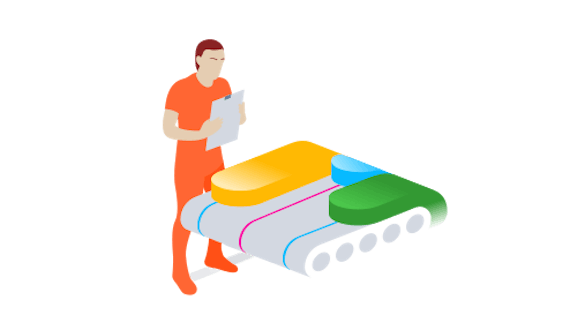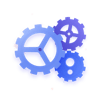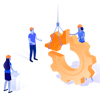Pragmatic Tips for SAFe®® PI Planning, Part 1: People
It takes practice to become good at anything worthwhile, and this is especially true for Program Increment (PI) Planning.
PI Planning is the hallmark ceremony for the organisation that adopts the Scaled Agile Framework for Enterprise®, or SAFe®. The event takes place over two working days, and sets the direction for development for the coming PI (usually defined as a fiscal quarter).
It's a challenging exercise that requires considerable investment, but it's an absolutely crucial activity for collaborative planning to be successful. In fact, not taking the time to plan collaboratively ends up being more costly than investing in good PI Planning. When previously-unknown dependencies are discovered for example, it can save weeks or even months of schedule and/or re-work.
I've experienced many PI Planning events in my career, and I know first hand that it's not an easy undertaking. It can be loud and chaotic and sometimes even emotional for participants.
Looking back on my own experiences, and doing interviews with others for their perspectives, has unearthed a wealth of angles for discussion on the topic. I've decided to break them down into a three part series of pragmatic recommendations focused on people, processes, and tools.
I hope you have the opportunity to read all three posts – and just in time for your next PI event in the new year! We'll dive into three big points on the people aspect of PI Planning below. If you'd like to jump around, Part 2: Processes is here, while Part 3: Tools is here.

Remember that every ART member is a different human being
Assume that everyone has the best intentions! Come in with the attitude that no one is trying to take over. No one thinks you’re not important or productive. Forgive them if they forgot you/overlooked you/planned without you. It was not intentional, and you'll feel better and be more productive when you assume the best.
- Every person learns and accepts new ideas at different paces. Have patience and compassion for everyone, even those who resist change.
- Not everyone will love PI Planning, including some leaders. That's okay. Those people are still important. Do not cram the process down their throats. Resistors will come to accept it, or you will find common ground. Or it may be that they will naturally move on in time. It will be okay.
- People who are very passionate for wanting to do the right thing can be very annoying to or even cause anger in others. If this becomes an issue, try to find a way to harness that person's passion and redirect it toward the team's larger goals.
Experience trumps training
It would be great if everyone involved in PI Planning had already been trained in SAFe®. That's a given. But training doesn't always exist across the board, and when it does it isn't always a silver bullet.
When standing up new Agile Release Trains (ARTs), seed experienced agilists as coaches on every team at every level, whether their experience is with team level agile, SAFe®, or some other agile methodology. If none are available, consider hiring contractors or consultants for support.
- The learning curve is flattened when you have peers explaining the terminology contextually throughout the PI instead of reciting definitions from a training class.
- These experienced team members can help fill in the gaps for the "how to" when it comes to estimation, effective retrospectives, and backlog grooming.
- Change management is hard, but experienced agilists will help win over team members who are resistant to change.

Invite outsiders for new perspectives
It is important to have all of the business, leadership, and development experts in the room for a successful PI planning event. However, consider inviting experienced visitors to your event who aren't familiar with your culture, processes, and tools. Independent visitors can identify patterns and spot areas for improvement that people embedded in the organisation simply can't see.
- Consider inviting somebody who is familiar with SAFe® but in the context of a completely different industry.
- A consultant or new hire could be given the assignment to look for habits or patterns embedded in the organisational thinking.
- Encourage everyone to continually step back to see the forest and not just the trees in their own yard.
In the end it's about happier collaboration
Always remember that the value of PI planning is in the collaboration of all of the product contributors to plan development and identify dependencies. I've witnessed personally and heard countless stories on the value of getting everyone in a room to discuss the work ahead and uncover issues that would have caused serious schedule and cost problems for their programs. The success of a PI plan is in the results you see in the system demonstrations and delighted customers.
Adaptavist provides expert consulting services around SAFe® and other practices that help increase agility in organisations.
About the author: Bonnie Beyer is a Senior Transformation Consultant at Adaptavist. She delivers services around culture, processes, and tools to foster clients' transformation initiatives. She believes that there are no one-size-fits-all solutions, and works side-by-side with clients to understand their unique values and identify the solution that will work best for them.
Bonnie has 25 years of development experience, including seven years in agile transformation in a complex, high integrity systems company. She holds an MBA from the University of Iowa, an MS in engineering from University of Illinois, and BS degrees in engineering and mathematics from Washington University in St. Louis and Lindenwood University.








